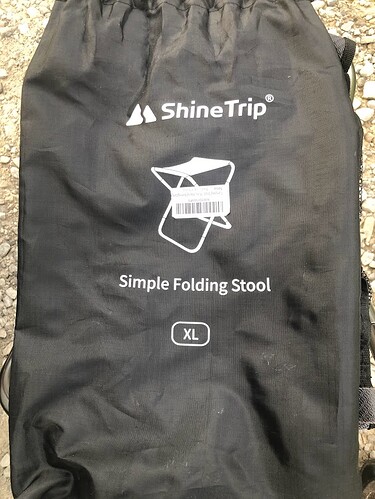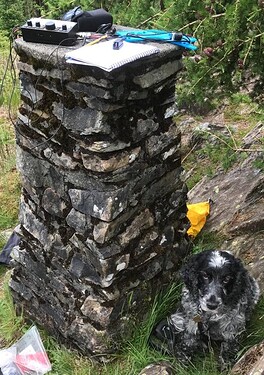I’ve just had a case of a spot come up for 40m, so I switched on the PSU, switched on the rig, selected 40m, tuned up the rig manually, and then went to the correct channel. Nothing. Just then the guy spotted for 20m. He had spent just four minutes on 40m before spotting for 20m, presumably some of that four minutes was spent changing bands and perhaps the antenna. This seems remarkably impatient to me, but what do others think? How long should you call on a lively band before giving up and trying another band?
You need to up your game.
The activator is the king 
No evidence he was ever on 40m. Spot was wrong?
Unless a technical problem suddenly occurred to prevent continuing on 40m, it does seem a bit too soon to give up waiting for a chaser.
On CW I call CQ and wait 10-20s before calling again and repeat that cycle maybe 3-4 times before giving up and switching bands. I suppose that will be less than four minutes. I think if one is freezing one’s butt off on a windswept summit, waiting that long for a reply is enough before trying another band.
That only happens to me on quiet bands like 60m. On 40m, 30m or 20m I normally don’t have to repeat calling CQ that often.
Ah, thanks! At last a reply that addresses the question!
For my part I think that you need the patience of a fisherman. You are competing with other spots and on a weekend in summer that can be a lot of competition. Chasers who would certainly call you may be in the queue for or exchanging signals with other activators, perhaps on other bands or modes (the guy I used as an example was on SSB.) Plus, of course, not all chasers will spend their time watching the screen for spots, they do other things while waiting and may be distracted. So I say that you should not give up too quickly.
My aerial is a link dipole on the lower bands. Changing bands involves a walk of 180m plus rig band change and swr check.
My logs testify to12 minutes minimum between calls on different bands. But I always work all chasers, so on qrg for 30 minutes or more, wx permitting.
Old cloth ears
David
G0EVV
Reasons to change from spotted frequency quickly are numerous and could include:
noticing a spot from someone on another band who you wish to work
incorrect spots
local QRM starting up
band sounding totally dead after a couple of calls
SWR being rather higher than one might like
wishing to give chasers the run around
and probably many more.
I don’t always self spot as I like to reward chasers who are actually listening for SOTA stations - like the old days.
Four minutes of unanswered CQing can seem like an eternity on a summit. Plus there are other possibilities that chasers in shacks cannot be aware of, like high local noise level on a certain band, VSWR issues, suddenly swamped by QRM on your calling frequency etc.
It doesn’t matter if the activator gives up after 4 minutes or 44 minutes Brian - there’s always the possibility that a chaser comes looking for you just after you’ve QSY’d.
Whatever happened to the skill and anticipation of being a top chaser? Those were the days.
[Edit: I see @g3cwi has said many of the same things as I was typing the above!]
I haven’t worked out the distance I need to walk to change bands on my 60/40/30/20 inverted v linked dipole on a 6m pole but it’s actually longer for 30 and 20. I can reach up to open or close the links for 60 and 40 but for the other bands I need to unpeg the far ends to let the wires droop enough to reach those links. And then of course I need to walk back to the far ends to tighten the wires again.
My legs are usually crippled after sitting operating too long so I don’t mind the exercise.
I recommend getting a seat of some sort. It really does make the whole experience much better. I recently met up with Ray M1REK and he had an amazingly lightweight seat. So amazing that I took a photo for future reference. Note the size - some similar stools are very small.
This looks similar but not so sure:
https://www.amazon.co.uk/Camping-Folding-Aluminum-Lightweight-Capacity/dp/B094947MNJ/ref=asc_df_B094947MNJ/
Ray also had one of these Amazon.co.uk Not so light but apparently popular with the photographers at the football. Also comfortable.
I’ve found that unless the wire is very tight due to high winds I can pull the wire sideways (90Deg to wire) which will bend the pole enough that I can walk along with my hand on the wire and reach the link.
Brian,
You need a modern solid state rig with inbuilt ATU and fast tuning across the band that is QRV in seconds. 
My FTdx401 was the last rig I manually tuned up. 
Oh OK I used a manual tuner on summits up to 7 years ago and ditto in the shack.
Not that there is anything intrinsically wrong with tube rigs and manual tuners but you have to wear the delay.
However if that activator choses to be extra quick then that’s his choice and his loss for not getting you in the log. We have a few in VK who are on three bands for up to 15 minutes total.
73
Ron
VK3AFW
The 20m links are 6m up. I can’t imagine the strain put on the wires and fittings to make the pole bend down low enough. I think the reason my 60m-modified SOTAbeams 40/30/20 antenna had been so reliable after years of frequent use (the only failure: a croc clip on one link broke off) is that I handle it as one would a newborn baby. I’ll stick to slackening the end pegs - and the exercise does me good.
Ah, nostalgia! I look back to the days when my S meter read just 1 or 2 in the gaps between stations, nowadays it reads 8 or 9 on the lower bands and 4 or 5 on 20m, things ain’t what they were! On a good day I can get perhaps as many as five chases in the log, in the old days I could do better than that when there were far fewer associations and participants but little noise pollution. In the “good old days” there may have been a few tens of activations in a day, now it is more like a few hundreds - which is why I mentioned competition as a factor to take into account!
Lets get one thing straight. I was not complaining about this guy, I just used him as an example when thinking about the level of competition that activators face nowadays.
I have a solid state rig but don’t like auto ATUs. However I do enjoy driving my ancient TS-520S occasionally, its more fun!
Yes you were! You’re wriggling like BoJo.
This from the guy that got sarky but never answered the question!
The weight (1.5lb) is alright but the pack volume is bigger than my HF go bag. I wouldn’t want to be forced to choose between packing a seat or a bothy bag or tarp. That’s a point, I have trouble crouching in my tarp without that additional height.
I have a very comfortable inflatable Klymit V Seat (which I place inside a large dry bag to stop it from being punctured on gritty rocks which was the fate of its predecessors). Trouble is, I get so wrapped up in operating (especially during a pileup) that I forget that my legs are hurting until I get up. It’s an age thing.
… on my last activation I managed quite a few band changes and hikes for the linked dipole. Indeed I had so many QSO’s and band changes it wasn’t until I made the last band change that I realised why Woody was so quiet. I had assumed he was sitting quietly monitoring 2m, whereas actually he had eaten his way through the dog lead… Is there a moral to this tale?.. well probably … a long run on one band with lots of concentration isn’t as good for this activator as lots of band changes - although it takes me at least 10 mins to change bands. like Andy with the addition of a Spaniel in the works… Paul

